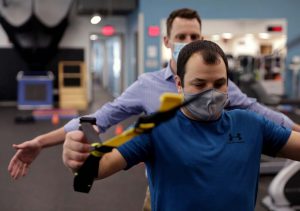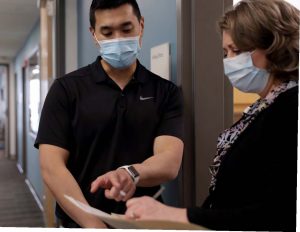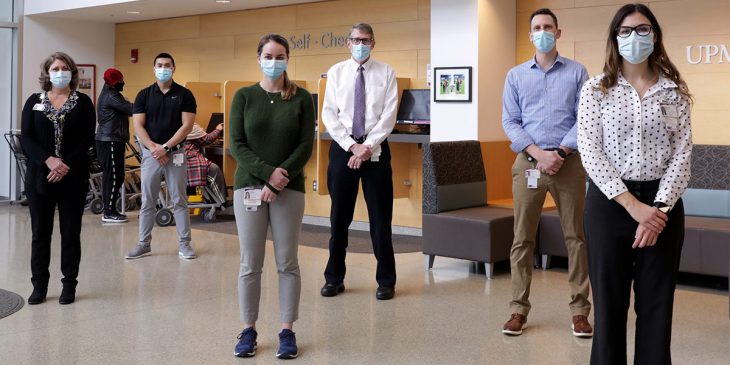The goal of the UPMC Program for Spine Health, founded by Dr. Christopher Standaert, is to help patients with chronic back pain by avoiding a focus on managing their pain.

Dr. Christopher Standaert
“This is not a chronic pain program,” said Standaert, director of spine health and vice chair of outpatient services in UPMC’s Department of Physical Medicine & Rehabilitation. “We won’t fix you. We’ll help you get better; we’ll help you find ways to function better, to get life better again.”
As simple as it sounds, “getting better” is what makes the Program for Spine Health unique: a focus on holistic health and the patient’s life instead of specific pain. That distinction drives the program’s transformational approach to treating patients struggling in search of answers to chronic back pain.
“These patients end up in perpetual motion. They go from emergency department (ED) to primary care to surgeon to ED to anesthesia to ED to primary care to ED to physical therapy,” he said. “They just bounce — for years.” What these types of patients don’t get with all this treatment, Standaert said, is better.
Chronic lower back pain and spinal disorders are the second leading cause of disability and the third most costly health condition for adults in the United States. While back pain is an incredibly common problem, it’s one that is much harder to deal with than people think.

Shane Conley uses physical therapy to support his patient, Anthony Halli’s treatment.
Nationwide, despite substantial increases in spending on spine care in recent years, there have been no overall improvements in spine health or reduction of disability.
Structural, systemic issues in the standard approaches to chronic back pain, including overutilization and failing to follow evidence-based guidelines, are part of the problem, Standaert said. For the 20% to 30% of back pain patients who have chronic pain, the attempts to manage their pain may even make them worse.
Standaert and his team partnered with primary care providers, orthopaedists and surgeons across several departments at UPMC and the University of Pittsburgh and sought to leverage the most effective ways to get people better.
The program begins with primary care providers and emergency departments. Patients fill out a survey-style risk calculator on a tablet, which can automatically trigger a best practice alert. That alert allows for a one-click referral to the program, where patients can get physical therapy from spine specialists who are graduates of the Primary Spine Provider program in the University of Pittsburgh School of Health and Rehabilitation Sciences, which trains experienced physical therapists in the complexities of spine care.

Tony Nguyen and Dawn Clarke consult on patient care.
The program then supports the patient with a team that includes a nurse coordinator, who engages in motivational interviewing; a pain psychologist, who helps address issues of anxiety, depression and coping; a nutritionist, who combats comorbidities like obesity and diabetes; and an in-person health coach, who helps patients navigate the skills they learn in the clinic and work through barriers.
While it is difficult to quantify holistic success, the numbers show that the approach is working. Spine Health participants have significantly fewer future visits to the emergency department and surgical centers and substantially higher rates of physical therapy when compared to similarly diagnosed patients outside the program.
Standaert said that for patients who have long struggled to get relief, simply shifting their focus from the difficulties in managing their pain to the ways they can live a healthier life can begin to make all the difference.









